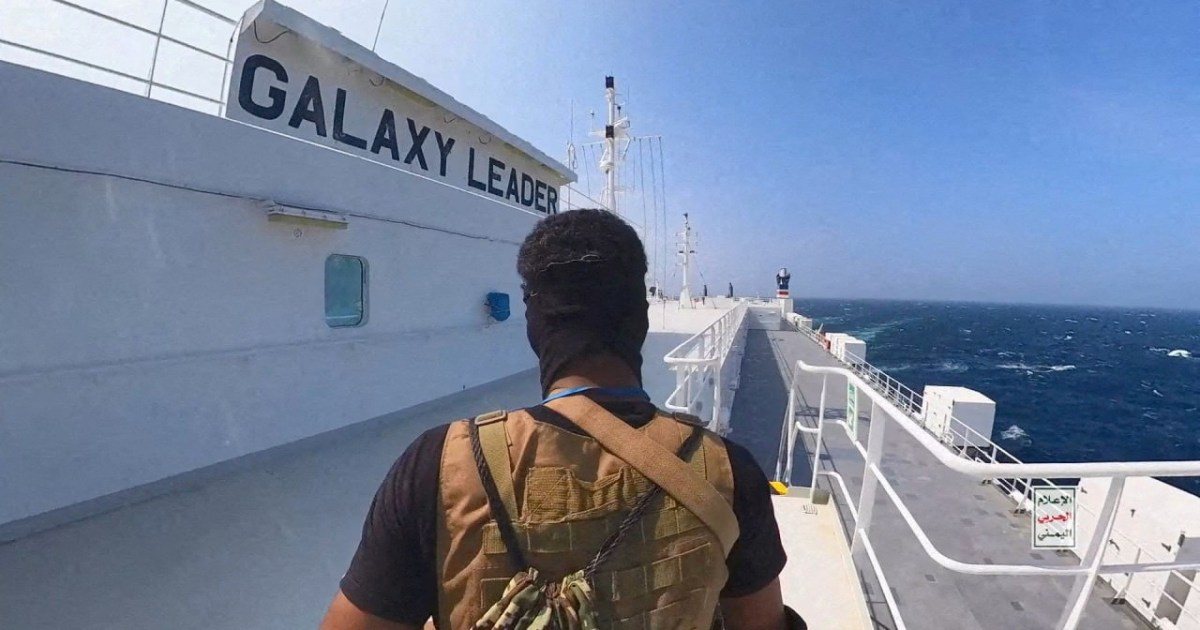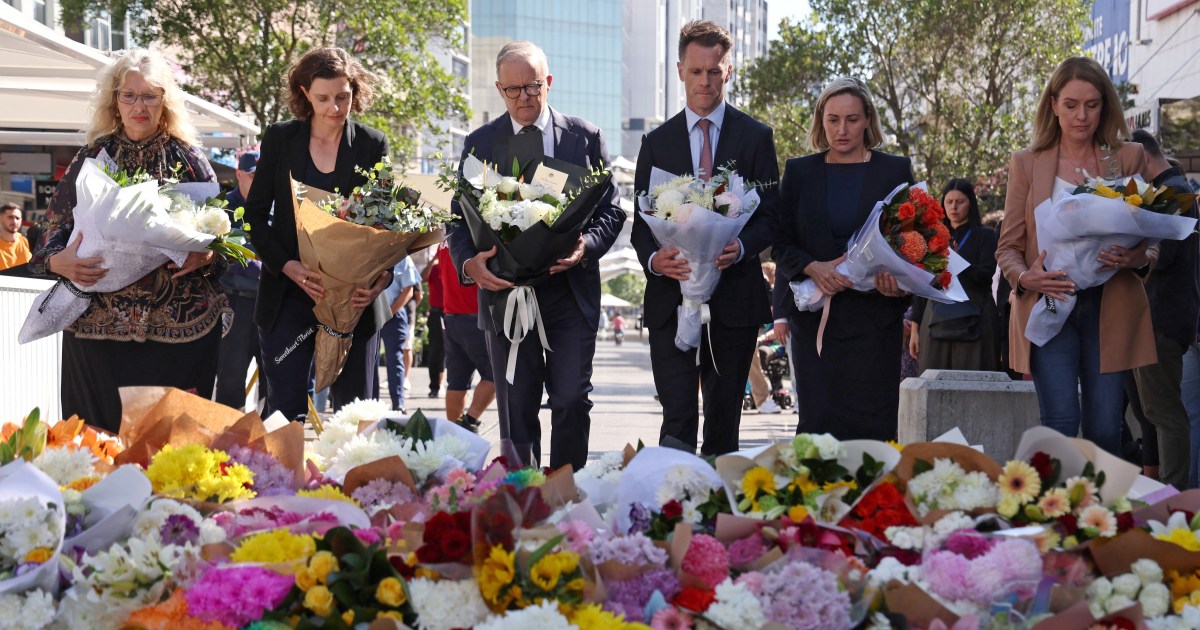Russia’s ‘dangerous advance’ in Ukraine’s east stokes fear, divisions | Russia-Ukraine war News
Kyiv, Ukraine – There is heavy, ”chaotic” fighting in the eastern Ukrainian town of New York.
Its prewar population stood at 3,000, and many worked at the Communist-era phenol plant whose odorous exhaust once filled the town’s centre.
But the plant has been damaged. Most residents have fled heavy shelling and the ever-shifting front line.
“It almost doesn’t exist as such, because one building is ours, another is already under [Russians], yet another one is ours again,” a Ukrainian serviceman wrote on Telegram on Wednesday.
“There’s chaos on both sides,” according to Deep State, a Ukrainian Telegram channel that publishes verified maps of hostilities and data on losses on both sides.
These days, New York is dotted with explosion craters, damaged buildings with broken windows and gaping roofs – and shallow, hastily-dug graves.
The town is about 60km (37 miles) from Pokrovsk, a Ukrainian defensive stronghold which Russian forces are bearing down on.
Moscow claimed to have taken New York earlier this week, but Kyiv says there are still sizeable pockets of resistance and that Russians move towards the larger town of Toretsk bypassing them.
Russia’s top brass routinely claim to have completely occupied Ukrainian towns even though they remain contested for days or even weeks.
Fighting in eastern Ukraine has heated up while Kyiv’s successful surprise offensive in the western Russian region of Kursk captures the world’s attention.
But the incursion has eclipsed the doom and gloom of Donetsk in news reports.
A top military expert warns that that Kyiv should concentrate its efforts to “stop the dangerous advance in the east”.
“Because there, it’s not the matter of residential areas taken over by Russians, but the matter of a serious threat to entire agglomerations,” General Lieutenant Ihor Romanenko, former deputy head of Ukraine’s General Staff of Armed Forces told Al Jazeera.
‘Help me if you can’
In New York, Russian mortar killed an elderly man in his backyard. His grandson pleaded with anyone in the town to take a photo of his grave in the garden.
“Help me if you can. Thank you and may God save you all,” the man wrote in a Telegram chat for New Yorkers at about 3am on Thursday. No one has replied yet.
Those who stayed in New York are either too old or disabled to move – or want to live under Moscow despite the destruction and death they witness firsthand, according to a community leader.
“The thing is that they still haven’t understood what Russia brings,” said Nadiya Gordiyuk, a teacher who has fled the full-scale Russian invasion.
New York’s proximity to separatist-controlled areas also means that anyone can tune in their TVs or radios to Russian broadcasts – and succumb to the Kremlin’s war narratives.
“They’ve got a complete apocalypse of brain. Russian TV worked better than Russian shells [that hit] their houses,” Gordiyuk said.
Moscow-backed separatists briefly occupied New York in 2014 and were kicked out after heavy street fights.
The rebel-held town of Horlivka is just kilometres away and can be seen from a hill where an old cemetery is still dominated by monuments to locals who died during World War II.
The fighting in New York is part of Russia’s advance on the Toretsk agglomeration, a densely-populated, industrial area where Soviet-era plants stand next to coal mines, and the naturally flat landscape is dotted with hills made of spent ore.
New York lies about 50km (31 miles) south of Bakhmut, a town taken over in May 2023, mostly by Russian mercenaries and pardoned inmates fighting for the Wagner private army.
After a 10-month siege, the use of heavy gliding bombs and the loss of tens of thousands of servicemen Russians entered the completely destroyed town in what analysts described as a Pyrrhic victory.
But the pattern of razing each village and town to the ground before taking it is being repeated in eastern Ukraine, where Russia occupied more than 1,000sq km (386sq miles) this year.
And that’s the “worst fear” – knowing that your hometown may be next to become a pile of rubble, says Lesya Gabar, a native of Mykolaivka that sits 70km (43 miles) north of New York and less than 20km (12 miles) from the front line.
Just like in New York, “the elderly don’t want to leave irrespective of conditions, even if the [Russians] get through”, Gabar, who lives in Kyiv but keeps in touch with her family, told Al Jazeera.
And while there are many pro-Ukrainian youngsters who have not left and hope that Mykolaivka survives, the pro-Moscow crowd feels emboldened by the advance of Russian troops.
Some occasionally call Gabar to make their point – even knowing that her husband commands an air defence unit.
“They say I don’t understand, that all the [Ukrainian] oligarchs are to blame, that Ukraine is not a nation and has never been one,” she said.
“And those who are older keep talking about the USSR – like it was better, everyone worked better, lived better. And [independent] Ukraine ruined everything,” she said.
Fears in Slovyansk
To Alina, a university student in Slovyansk, a city 80km (50 miles) northeast of Pokrovsk the proximity of the front line affects all walks of life.
“When you go out to crowded places, you immediately think, ‘Is it safe to stand here now, or maybe something will fly in?’” she told Al Jazeera.
It was in Slovyansk, where Russia-backed separatists started their rebellion in April 2014, and the town survived three months of occupation.
These days, because of complicated logistics, prices are three times higher than in the rest of Ukraine, while the influx of refugees from Russia-occupied areas is challenging, she said.
There are also some pro-Russian people around her. She occasionally hears them in shops or in the streets.
“But I just avoid such people,” she said. “Because you don’t know what trick such persons can play and how they will behave towards you,” she said.
Russia’s war has focused on the eastern Ukrainian region it is closest to geographically. Kyiv’s economic gains from the occupied areas have been wiped out.
The gains are “zero”, Kyiv-based analyst Aleksey Kushch told Al Jazeera. “As in nothing at all.”
The hostilities, now raging for a third year, have completely destroyed two of Ukraine’s largest steel plants in the southwestern city of Mariupol – and dozens of smaller factories and foundries that formed the backbone of Ukraine’s industrial output.
Check out our Latest News and Follow us at Facebook
Original Source







